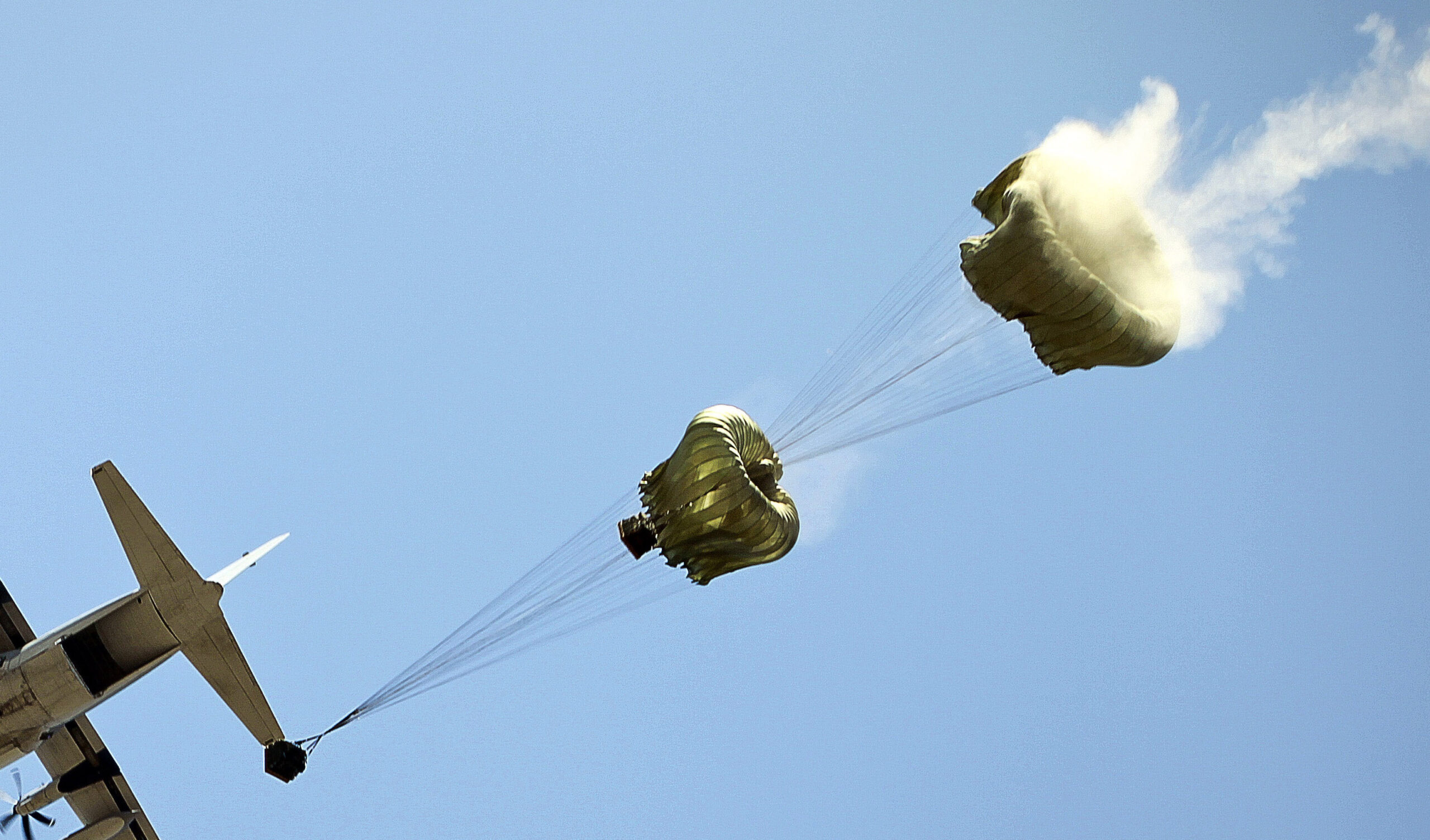

U.S. military planes will begin airdropping humanitarian aide into Gaza in the coming days, President Joe Biden announced Friday, as Israel’s military assault on the region reaches the end of its fifth month.
Announcing the drops, President Biden referred to an incident on Feb. 29 that killed at least 100 Palestinians when Israel forces fired on civilians around a convoy of food trucks.
“Innocent people got caught in a terrible war unable to feed their families and you saw the response when they tried to get aid,” Biden said, who briefly referred to Gaza as ‘Ukraine’ before correcting himself in further remarks. “But we need to do more and the United States will do more and in the coming days, we are going to join with our friends from Jordan and others to provide airdrops of supplies into Ukraine and seek to open up other avenues into Ukraine, including the possibility of a marine corridor delivering large amounts of humanitarian assistance.
“Aid flowing to Gaza is nowhere nearly enough now — it’s nowhere nearly enough. Innocent lives are on the line and children’s lives are on the line.”
The U.N. Office for the Coordination of Humanitarian Affairs estimates that more than half a million people — one quarter of the Gaza’s population – are in danger of living in famine conditions. The office estimates that at least 30,228 Palestinians have been killed and 71,377 Palestinians injured in Gaza since the invasion following the October 7 attacks.
“The food security situation continues to be extremely critical across Gaza, particularly in northern Gaza, with people reportedly feeding their children animal fodder” or hay, the agency reported “Vulnerable segments of the population, including children, the elderly and people with underlying health conditions, are particularly exposed to the risk of malnutrition and famine.”
Rumors of a pause in the fighting circulated in the final days of February but did not materialize.
The airdrops are expected to begin in the “coming weeks,” and they are intended to augment truck convoys of supplies into Gaza, National Security Council Coordinator for Strategic Communications John Kirby told reporters on Friday.
“This is a way to get more aid to more people quickly,” Kirby said during a White House news briefing.
Kirby added that “there won’t be just one” airdrop.
Biden’s decision comes a day after more than 100 Palestinians were killed as they tried to get aid from a convoy on Thursday. Hamas claims the Israelis opened fire on civilians, but Israel claims that many of the Palestinians who died had been trampled.
The White House has asked Israel to investigate the incident.
Kirby said on Friday that the U.S. government does not have enough information to determine how the Palestinians died.
“The idea of airdrops is not a new one,” Kirby said. “It is something that we have floated in the inter-agency before yesterday. Yesterday’s event, I think, underscores the need to find more creative ways of getting assistance in faster and at greater scale, and we’re going to continue to do that.”
The U.S. military has a long history of dropping humanitarian supplies, including Haiti in 2010. Both the Air Force and Marine Corps fly the C-130 in several configurations that routinely drop large cargo and supplies loads. Air Force C-17s can be configured to drop cargo from bases in the U.S. and then fly directly to overseas drop zones in a single mission.
However, neither the Pentagon nor the President addressed whether a U.S airdrop meant that U.S. troops would be on the ground in Gaza, which would normally be the case for large-scale drops. U.S. ground troops — generally tactic air controllers like TACP or Combat Control troops — would prepare a dropzone then guide aircraft overhead to ensure a safe drop.
The latest on Task & Purpose
- Afghanistan’s ‘Angel of Death’ is retiring from Air Force special ops
- Drill sergeant shoots first perfect score at Army marksman course
- National Guard asked to deploy to suburban Boston high school
- Space Force cancels classified military communications satellite project
- Navy commissions ship named for Medal of Honor recipient